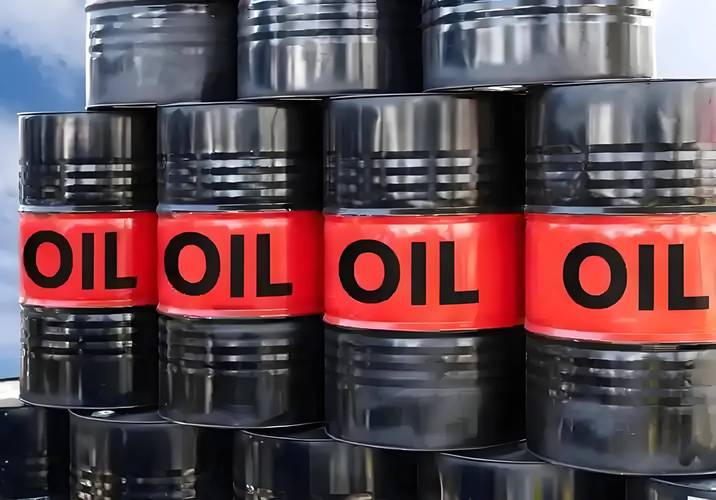
On October 22 local time, the US Treasury Department announced sanctions against Rosneft and Lukoil of Russia. The European Union simultaneously approved the 19th round of sanctions against Russia. The energy sanctions measures jointly launched by the two major economies quickly caused severe fluctuations in the international oil market. WTI crude oil futures and Brent crude oil futures both rose by more than 4% in a single day, with the highest intraday increase approaching 6%, highlighting the strong disturbance of geopolitical factors to the global economic lifeline. This game of sanctions and countermeasures is transmitting multiple risks to the global economy through the energy chain.
The impact of this sanction stems from its characteristic of precise strikes. The two sanctioned enterprises together account for nearly 50% of Russia's total crude oil exports, among which Rosneft is the world's second-largest oil producer. The sanctions imposed by the European Union are more groundbreaking. Not only has it lowered the price cap on Russian crude oil to $47.6 per barrel, but it has also for the first time included a ban on the import of Russian liquefied natural gas and placed 117 Russian "shadow fleet" vessels on the sanctions list. This all-round blockade attempts to cut off the core channels for Russia's energy exports, directly triggering market concerns over the crude oil supply gap.
The supply chain restructuring triggered by sanctions is rewriting the global energy trade landscape. As the largest buyer of discounted seaborne crude oil from Russia, India's import decisions have become the focus of the market. Data shows that India's crude oil imports from Russia reached 1.7 million barrels per day from January to September this year. If the imports are cut in half due to sanctions, 800,000 barrels per day of demand will shift to other markets, further intensifying the tightness in the spot market. Although Russian Deputy Foreign Minister Rudenko emphasized that supplies to India remain normal, the secondary sanctions threatened by the United States have already put Indian oil refineries in a difficult position. This uncertainty in trade flow, coupled with the supply and demand signal of an unexpected decline after three consecutive increases in US crude oil inventories, has jointly magnified the volatility of oil prices.
However, the sustainability of geopolitical premiums is being constrained by market fundamentals. The current global oil market is still under the backdrop of "oversupply". OPEC+ has shifted to a "production increase to maintain market share" strategy since April 2025. In November, it continued to increase production by 137,000 barrels per day, and the average daily increase in supply in the fourth quarter is expected to exceed 430,000 barrels. Meanwhile, the International Energy Agency has continuously lowered its forecast for global oil demand growth for several months. The New York WTI crude oil futures have seen their first futures premium structure in five months, indicating that market concerns over long-term oversupply have not abated. This game between fundamentals and geopolitical risks has led to significant differences among institutions regarding the trend of oil prices: UBS expects Brent crude to remain within the range of $60 to $70, while Goldman Sachs is bearish on the price at $52 per barrel in the fourth quarter of next year.
For the global economy, the oil price fluctuations caused by this sanction are like a "double-edged sword". For the economies of the United States and Europe, the rise in energy prices may slow down the process of inflation falling. The 2.2% inflation rate in the Eurozone in September and the 2.4% inflation rate in Germany have already demonstrated the resilience of price pressures. The rebound in oil prices may force the European Central Bank to postpone the shift in monetary policy. It will pose a greater impact on emerging markets. The rising cost of energy imports will intensify the trade deficit and the pressure of local currency depreciation, further weakening their growth momentum against the backdrop of the global economic growth rate slowing to 3.2%.
Russia's countermeasures and adaptability are also undermining the effectiveness of sanctions. Facing multiple rounds of sanctions, Russia has established payment channels that bypass the Western financial system, and the proportion of its exports to the Asian market has continued to increase. The ambiguous handling by the US Treasury Department without specifying the effective date of the sanctions actually reveals concerns over the runaway oil prices - after all, the US Department of Energy is planning to purchase one million barrels of crude oil to replenish strategic reserves, indicating its acceptance that the current oil prices are relatively low.
This energy sanctions game ultimately points to a struggle for the dominance of the rules. The US and Europe are attempting to restructure global energy trading rules through sanctions, binding financial restrictions with energy trade to achieve the transformation from "hard power to soft power". However, Russia's countermeasures and the autonomous choices of emerging markets are driving the global energy order towards multi-polarization. In the short term, geopolitical risks will still dominate oil price fluctuations. In the long term, the fundamentals of supply and demand and the development of alternative energy sources are the core forces that determine the direction of the energy market. At a time when the global economic recovery is fragile, such zero-sum game sanctions measures may eventually cost all participants more economically.

Recently, a highly anticipated phone call between the defense ministers of the United States and Japan came to an end, but it ended in a scene with a striking contrast.
Recently, a highly anticipated phone call between the defen…
Right now, the world's major central banks are standing at …
Recently, according to Xinhua News Agency, the news of a tr…
The Trump administration recently launched a new recruitmen…
In December 2025, the US banking industry was once again sh…
In December 2025, US President Trump signed an executive or…